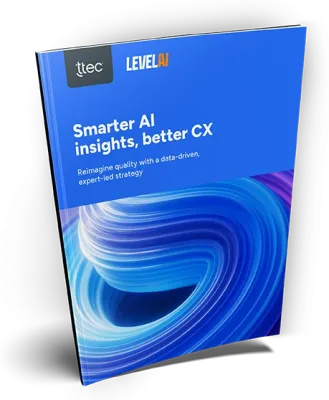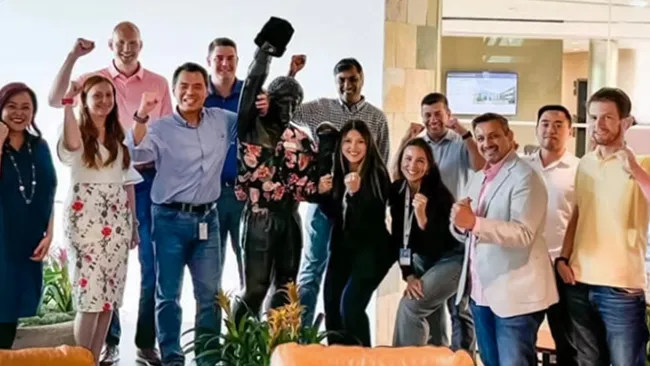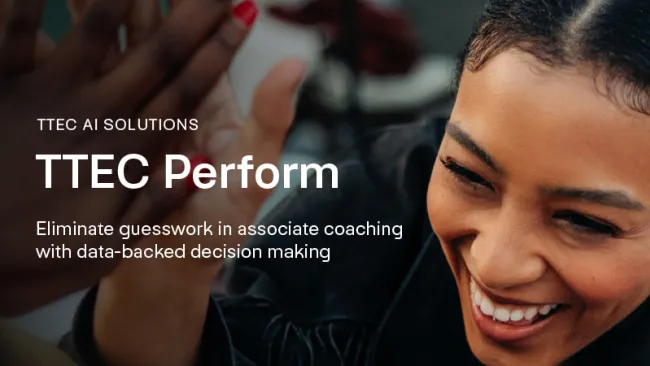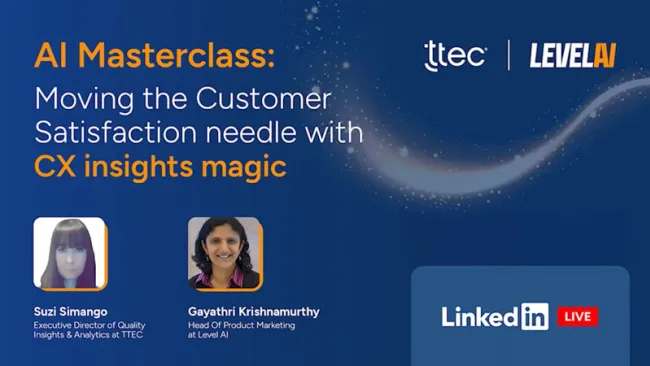I’ve been at rogenSi, a part of TTEC’s Consulting division, for over a decade, but I still recall my first day at work in a new role in other organizations I joined over the course of my career.
Each new start would begin in a very similar way: an induction of some sort which lasted a week, a day or a brisk half-hour. It would be accompanied by a large pack of paperwork informing of ‘who does what’ and ‘where to go in the event of a fire’. Somewhere in the pack there would be the ‘org chart’ – a diagram of names and titles to see me through until I’d been there long enough to discover for myself how it really worked - and who was really in charge.
And here's the point. In many organizations I’ve known there are individuals who lack titles but who nevertheless wield enormous power and others whose titles imply great things but whose day-to-day activities produce somewhat less.
In any mature business, formal structures are just one way of plotting the distribution of power. I had this discussion with Joe Folkman of Zenger Folkman, and we were reminded of research by Dalton and Thompson (1986), whose work sought to codify how individuals grow in influence without necessarily climbing the corporate ladder.
This is what Joe Folkman refers to as the ‘position and contribution paradox’:
- Organizations’ formal and informal structures are rarely the same.
- Organizations function best when the contribution of each individual exceeds, or is at least equivalent to, their formal position.
- Organizations suffer when an individual’s contribution falls short of what is expected for a person in that position. This is especially harmful when that person has a senior role.
- An individual’s contribution to the organization is not limited by the position they hold in the hierarchy.
These factors impact both at an organizational and at a personal level. An organization sets both internal and external expectations based on the function that individuals perform and the titles that they hold.
The research by Dalton & Thompson analyzed the fact that, along with the corporate ladder, which is based on formal hierarchy, there is another type of progression taking place. Nearly 20 years on, and with the influx of Gen Y into the workforce, we can ask ourselves if this informal ‘subtextual’ structure describing the advancement through four career stages is still relevant today:
Stage #1 The Apprentice - the young or recent hire.
Stage #2 The Professional - the person on a 'career journey'.
Stage #3 The Mentor - the coach, or the idea generator.
Stage #4 The Visionary - the pathfinder, sponsor and strategist.
As an Apprentice, the individual’s responsibility is to watch, learn, and contribute on mostly routine, often detailed work under careful supervision. They’ll be on a steep learning curve and will have one or more senior colleagues monitoring their climb and ready to catch them if they fall.
The Professional is sufficiently experienced and confident to be able to take responsibility
and contribute consistently with good quality and often collaborative work, with only minimal direction. On the downside, or at least at the risk of diminishing contribution, it’s possible for this Stage 2 performer to settle into the functional aspects of the role and scarcely look beyond the edge of their desk.
The Mentor is someone who contributes beyond themselves and their direct responsibilities. They often volunteer support to others in their development. This can extend to include individuals at a more senior level. These individuals are sometimes invited to join think tanks or planning initiatives because of their understanding of the business and their connectivity beyond their immediate team.
Finally, a small percentage of individuals will contribute at the level of Visionary, who will not only identify and help define strategy but will bring it alive for colleagues. While they may not necessarily hold the most senior role, they somehow stand tall in the organization and represent the values of the business.
This four-stage model helps to explain how certain individuals can have personal rather than positional power. I think its value lies in the way it could particularly help less experienced colleagues to understand the ‘truth’ about how the business really works and how career enhancement actually happens. It will allow them to lose the sense that career development is just about linear progression through a series of titles.
Personally, I’ve found it a fast way to consider the power at play within a team or a business. I have noticed that those who have risen quickly in organizations and have established strong, long lasting positions of authority have often exhibited stage 3 mentoring skills - even during their time as an Apprentice.
Another way of viewing this is to consider how organizations can create more powerful Stage 3 and 4 leaders for the future. It might be worth developing coaching skills earlier on and seeing how these skills are applied and the impact they have on others.
On re-reading the research, it occurred to me that in becoming aware of this four-stage model, and by considering how it plays out in a particular business, you could also apply it to succession plans.
While progression from Apprentice to Professional is often just a matter of building experience, the progression to Stages 3 and 4 are more about broadening understanding and honing instincts.
Stage 3 Mentors often can’t resist the urge to support others and so are likely to self-select, to some extent, but their power is such that every business would benefit from having more.
To give an example, a mid-to-senior-level banker I’ve worked with has a huge network of individuals whose careers he has helped to shape. But, far from taking him away from his day-job, he built the informal support of these individuals into his routine and found that the odd word or the occasional email check-in was enough to keep his mentoring influence alive for his colleagues.
This is the key point: the Mentor’s actions have a multiplying effect, because their mentees work is influenced by the Mentor’s experience and so, together they create a larger amount of higher quality work.
It’s simple but it’s very powerful.
The emergence of Visionaries works in a slightly different way. The term 'Visionary' is just a metaphor. Phase 4 professionals don’t actually see more clearly. Their skill is to predict more accurately. Mostly that skill comes from gaining a broader and deeper understanding of issues and the skill in communicating clearly.
The research and analysis by Dalton & Thompson still provides us with an interesting way to take a fresh look at a business and its center(s) of gravity. I would encourage managers and business leaders to take a few minutes to give your org chart a reality check and note where individuals contribute above, at or below the promise of their title.
Are you aware how your people fit into these four stages? How are you developing your succession plans? Does employing millennials impact the way you approach your development plans?
Also, check out the most recent issue of our e-newsletter.
Related Content:
Blog Post: Four Tips to Engage and Empower Your Workforce
Article: Four Traits of Customer-Centric Leaders















